Thingiverse

Modular Structural Support Joint by WilliamAAdams
by Thingiverse
Last crawled date: 3 years, 1 month ago
While building larger structures with struts and joints like these:http://www.thingiverse.com/thing:9359
I find that I need some more tesselation of the structure.
This set of things forms a simple joint which allows you to easily form more triangles within the boundaries of your structures. Of course you can do a whole lot more than just form more triangles, but that was the initial intent.
These things derive from a couple of things:http://www.thingiverse.com/thing:8130http://www.thingiverse.com/thing:8129
If you're doing a permanent structure, you could still use thing 8129, and stick a 1/8" pin into the hole.
There are a couple of key design aspects to these things.
1) They are symmetrically paired, which means you can place two next to each other (the 'half' form) and they will allow their struts to be at the same level. In fact, the interlocking nature of the pieces ensures that once you have two collars on the rod, they will not slip easily. That alleviates the need for any type of fastener for simple installations.
2) They use nipples and dimples for grabbing. So, you don't need any extra hardware to bring the parts together. No nuts and screws to fiddle with.
There is a notch on both sides of the receiver to help facilitate sliding the nippled grabber into place. You can fiddle with the depth of those notches, or eliminate them completely if you find you don't need them.
If you have enough of these placed around your structure, a plain wooden structure suddenly becomes strong enough to hold a blanket on top (on a dodecahedron with 36" struts). If you are using shorter struts, like 24", then you probably don't need these to reinforce the corners, but can do other things instead.
The connoisseur of platonic solids, and other forms of interesting solids, will recognize the fact that truncated forms are easily formed using this system. Just don't use the stellated vertices, move these to the ends of the struts, put a cap on it, and there you have it! At least for some forms.
At any rate, you might find some use for this set if you're into building things with sticks.
I find that I need some more tesselation of the structure.
This set of things forms a simple joint which allows you to easily form more triangles within the boundaries of your structures. Of course you can do a whole lot more than just form more triangles, but that was the initial intent.
These things derive from a couple of things:http://www.thingiverse.com/thing:8130http://www.thingiverse.com/thing:8129
If you're doing a permanent structure, you could still use thing 8129, and stick a 1/8" pin into the hole.
There are a couple of key design aspects to these things.
1) They are symmetrically paired, which means you can place two next to each other (the 'half' form) and they will allow their struts to be at the same level. In fact, the interlocking nature of the pieces ensures that once you have two collars on the rod, they will not slip easily. That alleviates the need for any type of fastener for simple installations.
2) They use nipples and dimples for grabbing. So, you don't need any extra hardware to bring the parts together. No nuts and screws to fiddle with.
There is a notch on both sides of the receiver to help facilitate sliding the nippled grabber into place. You can fiddle with the depth of those notches, or eliminate them completely if you find you don't need them.
If you have enough of these placed around your structure, a plain wooden structure suddenly becomes strong enough to hold a blanket on top (on a dodecahedron with 36" struts). If you are using shorter struts, like 24", then you probably don't need these to reinforce the corners, but can do other things instead.
The connoisseur of platonic solids, and other forms of interesting solids, will recognize the fact that truncated forms are easily formed using this system. Just don't use the stellated vertices, move these to the ends of the struts, put a cap on it, and there you have it! At least for some forms.
At any rate, you might find some use for this set if you're into building things with sticks.
Similar models
thingiverse
free

Bulbasaur - realistic by Nihlton
.... and misc details. creases on the knee joint and the like.
started with this model: http://www.thingiverse.com/thing:1576163
thingiverse
free

Yazzo Tri-Tool base by WilliamAAdams
...sion of the platform, saves on plastic and gives 3 more flat surfaces.
added openscad file, which is nice a clean and instructive
thingiverse
free
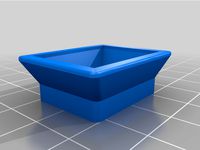
Polaroid 600 viewfinder replacement with notches by matopeto
...lution or better because one notch is very small. no supports needed, place with notches on bottom.
tested on my polaroid sun 660
thingiverse
free

IKEA - maximera - strut - attachment (improved) by Modellaner
...en the screws to much because the print won't last long.
you will also need:
m3 x 25 mm screws
m3 nuts
some rubber tape
thingiverse
free

Metropolis Logo by JCC_Starguy
...2348
i don't have a print yet because my printer needs some tweaking but i'll post the picture as soon as i get one made.
3dwarehouse
free

Grill Table
...ion on this joint is the only thing holding the table up. structurally speaking, it's all pretty dodgy (don't sit on it).
thingiverse
free

Volcanos on Catan & Volcania (variant: settler of catan) by Dakanzla
...rse.com/thing:2035221
other scenarios & variants: http://www.thingiverse.com/thing:1410173
thx isustrik for your nice design!
thingiverse
free

Raspberry Pi 4040 stand by antricos
...d it here:https://www.thingiverse.com/thing:4888872
the camera mount i am using is this:https://www.thingiverse.com/thing:2886101
thingiverse
free

Rivals for Catan -- card game box remixed by jerry_nz
...bbles a bit once placed on top of the box.
-- the box needs to be 1-2mm taller - the cards just don't fit perfectly.
enjoy me
thingiverse
free

Organ donor key ring by kjetilv
...'t do it with your body when you don't need it any more?
organ donor key ring, 44x24x3mm, can be scaled for your needs.
Williamaadams
thingiverse
free
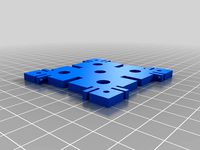
Toy Panel by WilliamAAdams
... most basic pieces of the klikko math system. it is a builder system where you can click panels together to form various shapes.
thingiverse
free
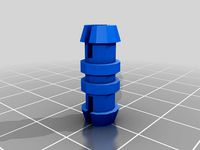
Yazzo by WilliamAAdams
...the connectors. the openscad file allows you to parameterize these connectors, and create any sizes you might want to play with.
thingiverse
free

Gandhi Lithophane by WilliamAAdams
...a lithophane of gandhi on a stamp.
any number of lithophane prints can be made by simply changing a file name in the .fab script.
thingiverse
free

Yazzo Servo Linkage by WilliamAAdams
...elative sizing of things. by default the arm is 1/2" thick to match the size of the sleeve bearing that's at the joint.
thingiverse
free
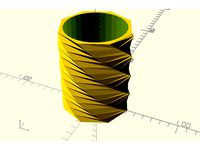
Faceted Drinking Cup by WilliamAAdams
...se for quite some years, but i was getting thirsty, so i designed this simple cup to test out printing with translucent filaments
thingiverse
free

Yazzo UClip Keyed by WilliamAAdams
...tandard key on the edge of it, so that you can attach something, or a number of things to it by sliding the key into their notch.
thingiverse
free
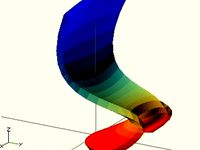
Cobra Chair by WilliamAAdams
... curves, and see how the curve reacts. it would probably be much easier to model with a different type of curve, but here it is.
thingiverse
free
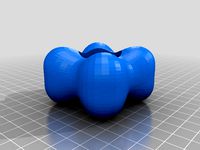
Coaster Blob by WilliamAAdams
...s a convenient blobby cup holder. put some sticky rubber feet pads on the bottom, and it will make a nice addition to your desk.
thingiverse
free

Yazzo Female Clevis by WilliamAAdams
...mm plastic filament probably. good enough for prototyping. printing on its side would probably be best for structural strength.
thingiverse
free
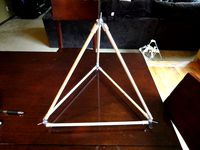
Simple Tetrahedron by WilliamAAdams
....
this thing is a simple vertex constructed from vinyl tubing. there are no actual files, only pictures that show the technique.
Joint
turbosquid
$5

Joint
...turbosquid
royalty free 3d model joint for download as blend on turbosquid: 3d models for games, architecture, videos. (1179882)
3d_export
$5
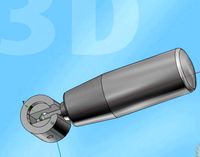
joint handle
...joint handle
3dexport
joint handle
3d_export
$5
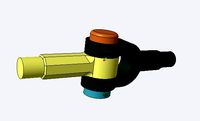
knuckle joint
...knuckle joint
3dexport
this is a 3d model of knuckle joint
3d_export
$5

Knuckle Joint
...knuckle joint
3dexport
industry use knuckle joint
3ddd
$1
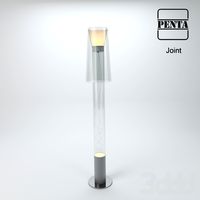
PENTA Joint
...penta joint
3ddd
penta
http://www.lampcommerce.com/en/catalogue/brands/penta-light/joint-floor-lamp
turbosquid
$49

Joint | Project
...squid
royalty free 3d model joint | project for download as on turbosquid: 3d models for games, architecture, videos. (1297983)
turbosquid
$10

universal joint
...squid
royalty free 3d model univresal joint for download as on turbosquid: 3d models for games, architecture, videos. (1309400)
turbosquid
$15

Joint Ashtray
...squid
royalty free 3d model joint ashtray for download as ma on turbosquid: 3d models for games, architecture, videos. (1199702)
turbosquid
$5

Unrolled joint
...e 3d model unrolled joint for download as blend, obj, and stl on turbosquid: 3d models for games, architecture, videos. (1577889)
3d_export
$5
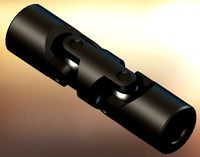
Cardan Joint 3D Model
...cardan joint 3d model
3dexport
cardan joint
cardan joint 3d model fau 71171 3dexport
Modular
3ddd
$1

MODULAR
...modular
3ddd
modular , врезной свет
modular потолочные светильники
3ddd
$1
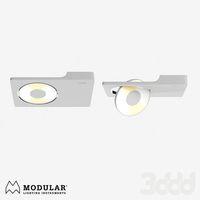
Modular Spock
...modular spock
3ddd
modular
modular spock
3ddd
$1
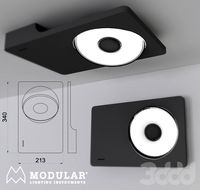
MODULAR / Spock
...modular / spock
3ddd
modular
modular/spock
design_connected
$7
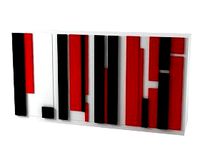
Modular
...modular
designconnected
emmemobili modular shelves and storage computer generated 3d model. designed by ferruccio laviani.
3ddd
$1
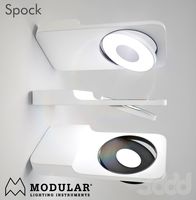
Modular spock
...modular spock
3ddd
modular
spock wall led
turbosquid
$25

Modular sofa Angelo Cappellini Modular
...a angelo cappellini modular for download as max, fbx, and obj on turbosquid: 3d models for games, architecture, videos. (1570923)
turbosquid
$15

Modular sofa Angelo Cappellini Modular
...a angelo cappellini modular for download as max, fbx, and obj on turbosquid: 3d models for games, architecture, videos. (1570304)
3ddd
$1
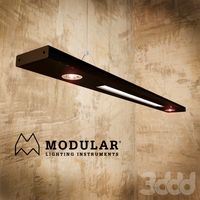
Modular 2FLAT2C
...modular 2flat2c
3ddd
modular
modularhttp://www.supermodular.com/
3d_export
free
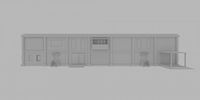
Modular walls
...modular walls
3dexport
modular walls for playing without materials and textures
3ddd
$1

Modular / Lighting Juliette
...modular / lighting juliette
3ddd
modular
modular lighting juliette
Structural
3ddd
$1
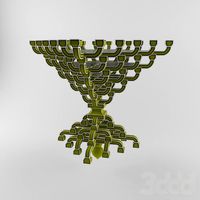
structure
...structure
3ddd
structure
turbosquid
$28
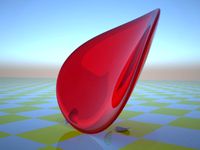
structure
...rbosquid
royalty free 3d model structure for download as max on turbosquid: 3d models for games, architecture, videos. (1338108)
turbosquid
$4
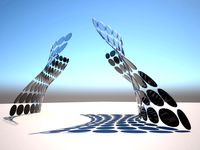
structure
...rbosquid
royalty free 3d model structure for download as max on turbosquid: 3d models for games, architecture, videos. (1338171)
turbosquid
$3

structure
...rbosquid
royalty free 3d model structure for download as fbx on turbosquid: 3d models for games, architecture, videos. (1392940)
turbosquid
free

Structure
...y free 3d model structure for download as 3ds, obj, and blend on turbosquid: 3d models for games, architecture, videos. (1163360)
3d_export
$5

Abandoned structure
...abandoned structure
3dexport
abandoned structure consisting of ground floor and first floor walkable.
3d_export
$5

Small Structure
...all structure
3dexport
small structure static object, formed by a large room and a closet inside, lowpoly model supports the pbr
3ddd
$1
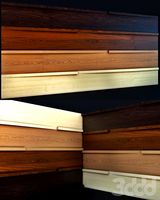
Structure - Kubik
... (в размерах+текстуры+ obj)http://www.lancko.com/structure-collection-kubik-p/lancko-walls-st-ku.htm
archive3d
free

Structure 3D Model
...nstruction structure prefabricated elements
structure - 3d model for interior 3d visualization.
archive3d
free

Structure 3D Model
...chive3d
metal construction structure
structure part-2 - 3d model for interior 3d visualization.
Support
turbosquid
$5
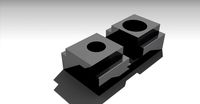
Support
... available on turbo squid, the world's leading provider of digital 3d models for visualization, films, television, and games.
3d_export
$8

Support 3D Model
...support 3d model
3dexport
support cantilever console
support 3d model tasal 73900 3dexport
3d_export
$5
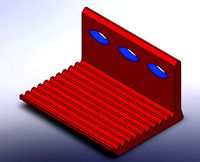
phone support
...phone support
3dexport
phone
turbosquid
$12

Support bars
...squid
royalty free 3d model support bars for download as max on turbosquid: 3d models for games, architecture, videos. (1411542)
turbosquid
$8

support weights
...id
royalty free 3d model support weights for download as max on turbosquid: 3d models for games, architecture, videos. (1411538)
turbosquid
$2
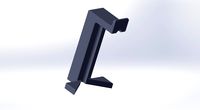
headphone support
...royalty free 3d model headphone support for download as sldpr on turbosquid: 3d models for games, architecture, videos. (1357583)
turbosquid
$2

Support for flowers
...royalty free 3d model support for flowers for download as max on turbosquid: 3d models for games, architecture, videos. (1463543)
turbosquid
$14

Flower Support
...alty free 3d model flower support for download as max and obj on turbosquid: 3d models for games, architecture, videos. (1497066)
turbosquid
$5
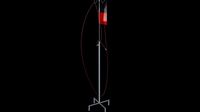
serum support
...yalty free 3d model serum support for download as c4d and obj on turbosquid: 3d models for games, architecture, videos. (1551267)
3d_export
$10

spyro joystick support
...spyro joystick support
3dexport
joystick support of spyro dragon
